|
Industry
World Diamond Council Annual Meeting
By Amber Michelle
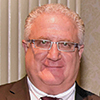 |
| VanderLinden
|
Expanding the scope of the Kimberley Process (KP) and social responsibility were the top two issues discussed at the opening session of the World Diamond Council’s (WDC) annual general meeting, held at the Waldorf Astoria Starlight Room in New York City on September 8 and 9. Ronnie VanderLinden, chair, U.S. Jewelry Council, opened the meeting and introduced the topics of the event.
 |
| Polyakov |
In his opening remarks, Andrey Polyakov, WDC president and also ALROSA vice president, stated that the WDC has fulfilled its mission of successfully representing the KP, while bringing together many cultures and nations. But, he pointed out, the KP does have its own difficulties — its slowness to get anything done and its lack of effectiveness in dealing with issues relating to social responsibility. Still, he observed that the KP, while not perfect, is the only institution to protect the industry from conflict diamonds.
Polyakov noted that the WDC is going forward with ways to provide guarantees of rough origins and a system of warranty to extend KP rules that will defend and support the trade.
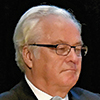 |
| Churkin |
Next up was H.E. Ambassador Vitaly Churkin, permanent representative of the Russian Federation to the UN. In his remarks, he reminded the audience that the diamond industry is perceived as closed and that the industry entered the new Millennium in 2000 in total disarray, with conflict diamonds in the news and its reputation at a low point. Churkin reiterated that the UN agreed to support the KP in 2003 and has done so each year since. “The Kimberley Process shows that there is always a way forward once a common goal is recognized,” he stated.
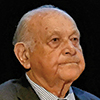 |
| Tempelsman |
Maurice Tempelsman, chairman of the board of directors, Lazare Kaplan International Inc., was the keynote speaker. He commented that the diamond business tends toward the insular and that the WDC was born from a need for engagement in a larger world. “We ensure progress by recognizing when new obstacles arise and by recalibrating our course to surmount those obstacles,” he said.
In his speech, Tempelsman noted three structural forces that “change the ground beneath us.” First is the shift in power from upstream to downstream, from the production end of the spectrum to the consumer end. He noted this is particularly jarring because pricing power was always concentrated upstream and the entire culture of the supply chain was molded by a relatively predictable pricing curve.
The second factor Tempelsman identified is heightened financial scrutiny, which is driven by national security concerns in regard to combating terrorism. He pointed out that following the money is a strong way of tracking that leaves no room for “fictitious operations.” He observed that banks are exiting the diamond business due to compliance risks, since they enforce the Anti-Money Laundering/Anti-Terrorist Financing (AML/ATF) regulations and are concerned about reputational risk and harsh penalties.
The third shift Tempelsman cited was the emergence of synthetics as a permanent part of the diamond market. He noted that the larger threat is in the misrepresentation of synthetics as natural. He pointed out that synthetic diamonds at this time are exempt from the regulatory requirements of the USA PATRIOT Act that are imposed on natural diamonds.
According to Tempelsman, none of these challenges is capable of being resolved without some form of structured industry engagement with governments around the globe and some form of industry leadership in helping to initiate those engagements.
Tempelsman emphasized that the industry must maintain its ethics. “Willingness to engage in an uphill struggle is a measure of moral seriousness and a precondition to any kind of progress,” he concluded.
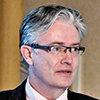 |
| Owen-Jones |
Speaking next was Robert Owen-Jones, KP vice chair and assistant secretary, Australian department of foreign affairs and trade. He will take over as KP chair in 2017. He said that his vision for the KP will be outlined in November 2016 and the first KP meeting in 2017 will take place in Perth, Australia.
The KP will have three probable components, Owen-Jones explained. The first being to maintain and strengthen the integrity of the process and to make sure that it is well implemented. Next will be to take a look at indigenous issues and their involvement and lastly to review the KP and find ways to make it better. Sustainability, synthetics and artisanal and alluvial mining will be three broad themes that he plans to address during his tenure.
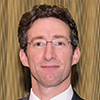 |
| Keller |
Andrew Keller, deputy assistant secretary, bureau of economic and business affairs at the U.S. State Department, gave a speech on the U.S. State Department perspective on the KP. He said the jewelry industry is an important part of the U.S. economy.
Keller went on to say that it is important that countries producing diamonds benefit from that wealth. He also said that consumers must have clean diamonds. Keller noted that the KP provides some assurance that diamonds are conflict free, but it is not enough, as consumers are demanding more assurances regarding social issues.
In addition, Keller pointed out that the limitations of the KP could compromise the industry, as today’s consumers are concerned with more than diamonds being conflict free. They also care about working conditions, human rights and environmental issues. Keller recognized that many of these concerns are outside the scope of the KP. He urged the industry to strive to operate with due diligence.
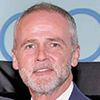 |
| Bone |
Following up on Keller’s speech, Andrew Bone, executive director of the Responsible Jewellery Council (RJC) spoke on RJC and the diamond supply chain. He too noted that the KP is necessary, but is not enough and that it must address social issues and other challenges beyond conflict diamonds. He said that the RJC is in the insurance business to protect the financial value, emotional value, ethical integrity and product integrity of industry stakeholders.
 |
| Waelter |
Closing out the opening session was Fred Waelter, global business lead, UL’s Responsible Sourcing division. He spoke on supply chain verification for small and medium enterprises. Waelter’s focus was on social compliance issues from child labor and labor abuse to environmental abuse.
Waelter explained that his firm works with companies to map out goals, train staff on how to implement the goals and then track those efforts to make sure that everything is done in accordance with procedure. Waelter concluded that supply chain mapping is possible and while crossing borders in the supply chain is complex, it is not impossible to map and track.Article from the Rapaport Magazine - October 2016. To subscribe click here.
|
|